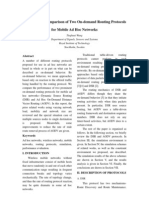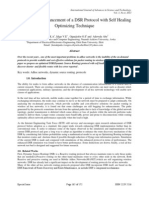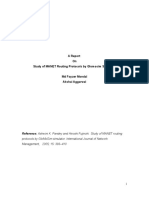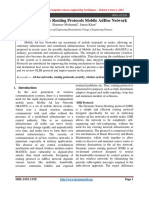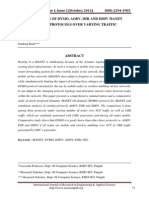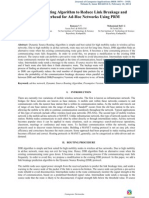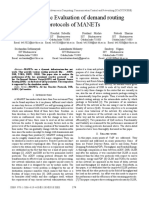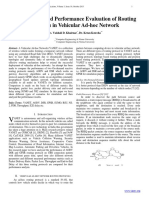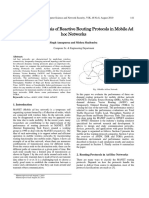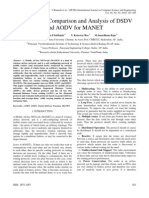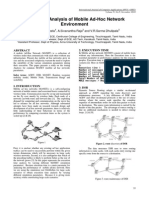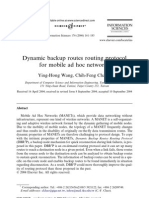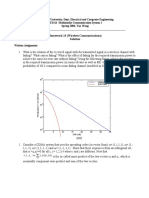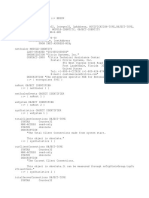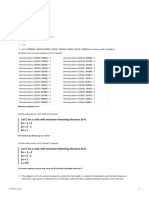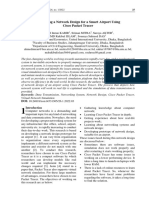0% found this document useful (0 votes)
99 views6 pagesDynamic Source Routing
Dynamic Source Routing (DSR) is an on-demand routing protocol for wireless mesh networks that uses source routing instead of relying on routing tables at intermediate devices. It determines source routes by accumulating addresses of devices between source and destination during route discovery. Optionally, it can define a flow ID to allow hop-by-hop forwarding instead of source routing. Route discovery and maintenance involve flooding route request packets and generating route error packets for broken links.
Uploaded by
Vignesh AppuCopyright
© Attribution Non-Commercial (BY-NC)
We take content rights seriously. If you suspect this is your content, claim it here.
Available Formats
Download as DOCX, PDF, TXT or read online on Scribd
0% found this document useful (0 votes)
99 views6 pagesDynamic Source Routing
Dynamic Source Routing (DSR) is an on-demand routing protocol for wireless mesh networks that uses source routing instead of relying on routing tables at intermediate devices. It determines source routes by accumulating addresses of devices between source and destination during route discovery. Optionally, it can define a flow ID to allow hop-by-hop forwarding instead of source routing. Route discovery and maintenance involve flooding route request packets and generating route error packets for broken links.
Uploaded by
Vignesh AppuCopyright
© Attribution Non-Commercial (BY-NC)
We take content rights seriously. If you suspect this is your content, claim it here.
Available Formats
Download as DOCX, PDF, TXT or read online on Scribd
/ 6

